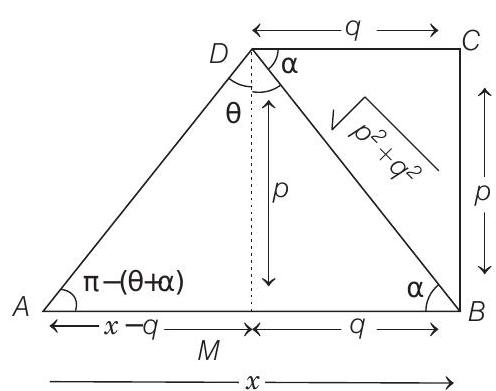Properties of Triangles 1 Question 4
4.
(2013 Main)
(a)
(b)
(c)
(d)
Show Answer
Answer:
Correct Answer: 4. (a)
Solution:
- Applying sine rule in

and
Alternate Solution
Let

In






